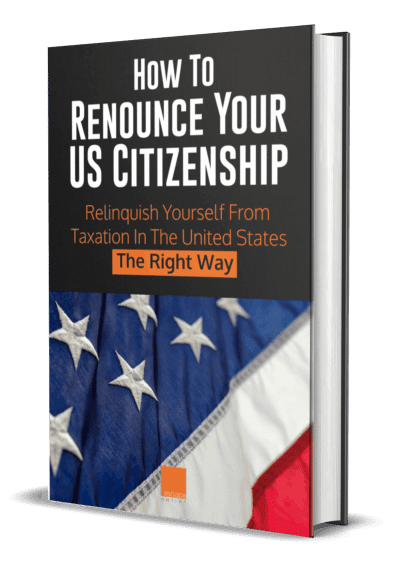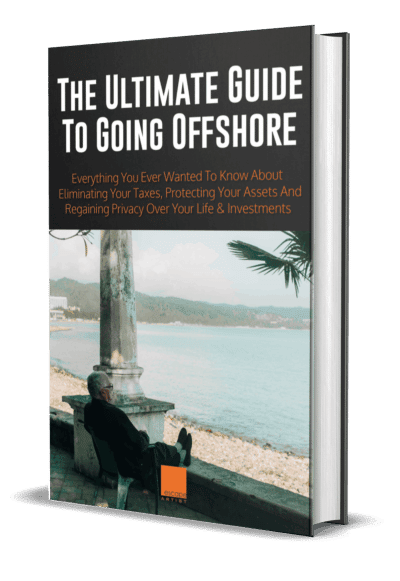Introduction to the Foreign Earned Income Exclusion
Going to work abroad or start a business offshore? The Foreign Earned Income Exclusion is the first, and often the only, rule you need to understand to save on your US taxes. The Foreign Earned Income Exclusion is the most important tool in the expat’s toolbox, so spend the time to master it before you go overseas.
Here are the basics of the Foreign Earned Income Exclusion.
If you become a resident of another country, or you’re out of the United States for 330 out of 365 days, you can earn up to $102,100 in salary for 2017 free of Federal Income Taxes.
That’s all you need to know! Seems simple enough right? Well, not really. Let’s break it down.
FEIE: Resident of Another Country
If you move abroad and intend to make that country your home for the foreseeable future, and get a residency visa there, you’re a resident for US tax purposes. As a resident of a foreign country, you can visit the United States for 3 or 4 month of the year.
Because this version of the Foreign Earned Income Exclusion is based on your intent, it’s difficult to quantity. Here are just a few of the boxes you need to tick to prove it’s you’re a resident:
- It’s your home base (where you return to after traveling),
- where you spend most of your time,
- you live there for a full calendar year,
- you file taxes there,
- open bank accounts,
- have residency or some other authorization to live there, and
- generally become a part of the community.
Note that a residency permit alone is not sufficient for the IRS. If you have residency in Belize (one of the easiest to obtain), but spend only 1 month a year there, you are not a resident. Belize must also be your home base and where you intend to call home for the foreseeable future.
Likewise, if you go overseas on a 2 year work contract, you are not a resident for US tax purposes. You’re there for a fixed period and don’t intend to make that nation your home indefinitely.
In my opinion, the best residency program in 2017 is Panama. Here, you can bet residency with an investment of $20,000. This quick low cost program is great for Americans who need a visa for US tax purposes and want to operate a business from a low cost tax free country. For more, see: Best Foreign Residency Program in 2017.
FEIE: 330 Days
In your first year of being overseas, you’ll probably need to use the 330 day test to qualify for the Foreign Earned Income Exclusion. And, if you don’t have a home base, or don’t become a resident of your home country, then you should continue using the 330 day test because you aren’t a resident.
Experience the Insider community that takes your international lifestyle to the next level. Download your FREE guide
"18 Steps to Implementing Your Plan B" instantly!
Someone without a home base or residency is referred to as a perpetual traveler.
While the residency test is based on your intentions, the 330 day test (often referred to as the physical presence test) is based on your travel to and from the United States. As such, it is much easier to quantify and plan for.
You simply need to be out of the US for 330 of any 365 day period. So, if you are out from March 1, 2017 to March 31, 2018, you qualify for the FEIE.
And you don’t need to gain residency anywhere else, pay taxes to any country, or create a “home base.” Just meet the time test and you’re golden. The physical presence test is always the best option for you “perpetual travelers.”
Of course, in practice, this can be challenging. Many try to push the envelop and spend 29 days in the US. Get caught miscalculating days and the entire FEIE is lost… plus the IRS will tack on all kinds of interest and penalties. So, don’t mess around.
Click here for more information on the FEIE and how to calculate travel days.
FEIE: $102,100
For tax year 2017, you can earn up to $102,100 in salary from your work abroad and not pay US Federal income tax. This amount goes up a bit each year… it was $99,200 in 2015 and $101,500 in 2016.
If you earn more than $102,100 in 2017, you will pay US taxes on the excess unless another exemption, credit, or deduction applies. For example, if you’re living in a high tax country, the Foreign Tax Credit will help you avoid double tax on your salary.
Likewise, if you’re operating a business through a foreign corporation, you might be able to retain some earnings and defer US tax on the amount over the FEIE. This is a complex matter. Please see: How to Manage Retained Earnings in an Offshore Company
FEIE: Salary
The Foreign Earned Income Exclusion applies only to “earned income.” Income is earned if it’s from your business (self-employed) or a salary. So, profits from capital gains, investments, etc. are not covered by the FEIE. Only ordinary income from your work or your active business may be offset by the FEIE.
Your salary and your FEIE status should be reported on IRS Form 2555.
FEIE: Federal Income Taxes
The FEIE allows you to eliminate Federal income tax on your first $102,100 in 2017. Self-employment, FICA, Medicare, Obamacare, and other taxes may still apply. Hopefully Obamacare taxes will disappear, but still apply as of this writing.
If your employer is a US company, then standard social taxes and withholding will be taken from your salary. If your US employer pays you through an offshore corporation / subsidiary, you don’t get hit with these taxes. Ask your employer about this before going abroad.
If you operate a business offshore without a corporation, you get to pay 15% self-employment tax on your net profit. Plus, your FEIE amount is reduced by your expenses… which can be a real killer.
Here’s an example. Let’s say you run a business in Panama. You are out of the US for all of 2015 and therefore qualify for the FEIE using the physical presence test. Your net profit is $100,000 on $200,000 in sales.
Had you been operating through an offshore company, your tax would be zero. The FEIE would eliminate Federal tax on the $100,000 and the corporation would cut out the 15% SE tax.
But you failed to plan, don’t have a foreign corporation, and your business income and expense ran through your personal bank account.
This means your business is reported on your personal income tax return, form 1040 and schedule C. As a result, you get to pay $15,000 in SE tax on the $100,000 in net profits.
Also because it’s on your personal return, rather than a foreign corporate return (form 5471), your FEIE is reduced by your expenses. In this example, your expenses are 50% of your sales. Therefore, your FEIE is cut in half to $50,400. In addition to the 15% SE tax, you pay income tax of about 35% on $49,600.
Bottom line, a lack of planning can cost a small business owner $32,360 per year.
If a husband and wife were both operating the business, and your net profits were $200,000, then you you’re paying a total of $64,360 out of the goodness of your hearts to the IRS!
Finally, if you earn more than the FEIE, and would have retained earnings offshore, the tax costs of poor planning can be much higher.
I hope you find this post helpful. For more information, please contact me at info@premieroffshore.com or call us at (619) 550-2743. All calls and consultations are confidential.
Like Our Articles?
Then make sure to check out our Bookstore... we have titles packed full of premium offshore intel. Instant Download - Print off for your private library before the government demands we take these down!







